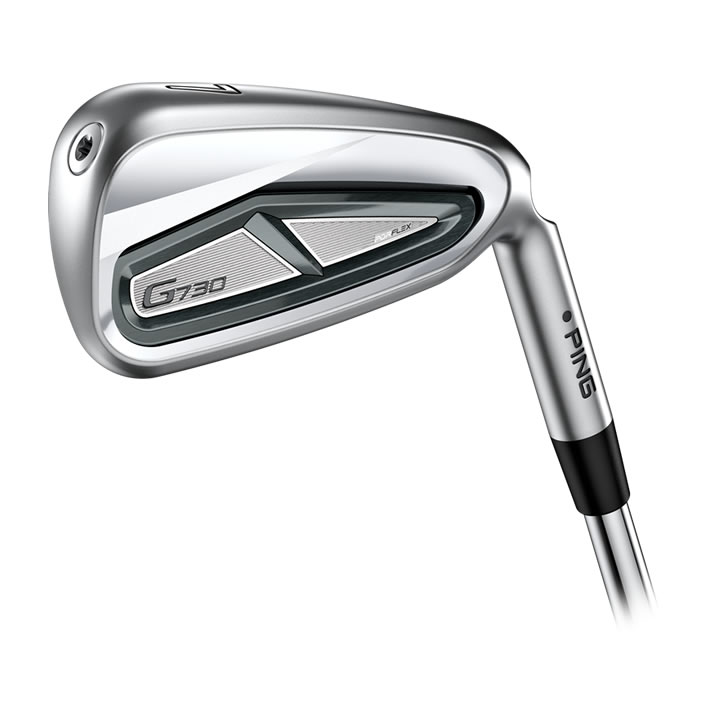Aurora’s Davis Bryant hopes to keep a good thing going
Aurora native gets pair of Top 10s in his second pro season
The year isn’t even four months old, but the Phoenix, AZ-based manufacturer has already given us the G430 Max 10K driver, Blueprint S and T irons, S159 wedges, and a slew of PLD putters. Now comes the player’s-distance i530 and game-improvement G730 irons.
Not surprisingly, the G430 Max 10K received a great deal of hype and attracted the most eyeballs, while the elegant (Elegant? Ping? Yes, it’s been a thing for years now) Blueprints certainly caught the attention of better players. The latest irons will undoubtedly arouse their share of interest too, though, as Ping says the i530 shows significant gains over the i525 it’s replacing, and that the G730 is the longest iron it’s ever made and has a higher MoI than the G710 which it replaces.
These days, a lot of game-improvement irons (GI) allow the game-improver to feel good about the clubs in their bag. The vast majority of yesteryear’s GI irons were so big, thick, offset, colorful, and just plain unsightly, that they came with a stigma that might not have put their owner at ease. But OEMs have gotten good at packing GI irons with technology (so they help the game-improver…er…improve) while refining their looks.

The G730 is a nice-looking club. Sleek? No. Elegant? Far from it. The club snob who takes a dim view of anything with even the shallowest of cavities, a slightly widened sole, or a top line even a smidge thicker than his own clubs’, would most likely wince upon seeing them. But there are plenty of less fetching clubs about.
We consider the new G730 significantly more attractive than the company’s G430, for instance. And it has a higher MoI and shorter blade length than its predecessor – the G710. It doesn’t have the G710’s black finish either, but rather a Hydropearl 2.0 silver finish that both looks good and, Ping maintains, mitigates problems caused by rough and wet conditions.
The G730’s USP, though, is the very thin, heat-treated, hyper 17-4 stainless steel face which allows for significant face-flexing and thus increased ball speed. The CG is lower too which increases the launch angle though strong lofts keep the ball on a trajectory, and promote a rate of descent, that game-improvers will feel comfortable with.
The cavity features a PurFlex badge that is designed to enhance the feel and produce a more powerful sound. Meanwhile, the tungsten toe screw and shaft–tip weight help increase the club’s MoI while enabling you to fine-tune the club to your preferred swing weight.
There are four wedges (40˚, 45˚, 50˚, and 56˚), gapped further apart than the irons and whose grooves are machined for consistent spin.
The i530, meanwhile, has a hollow-body design with a thin, forged, C300 maraging steel face which Ping also uses for its metalwoods. Compared with its predecessor – the i525, the CG is 10% lower, the lofts, like those of the G730, are jacked somewhat – 1½˚ to 2˚ stronger than those of the i525, and the upper part of the rear wall is 40% thinner thanks to some attractive machining.
It’s not just for looks though. The rear wall was machined (thin peals of steel removed) to lower the CG which enables manufacturers to strengthen the lofts and enables you to get the ball in the air and increase your ball speed. Clubmakers are forever seeking ways to lower the CG, of course, and this rear wall–milling has the desired effect while looking really good.

The internal cavity, like that in a lot of other player-distance irons, features a polymer to dampen vibration and improve the sound of impact. But, unlike other irons in this category, the i530 has a hollowed cavity that is slightly smaller, shaped differently, features strategically-positioned ribs, and, rather than being completely filled with polymer, has its polymer located very precisely. All that, says Ping, enables the face to flex more efficiently, and improves the sound/feel.
The i530 features Ping’s MicroMax grooves which means more grooves on the face positioned closer together. That creates more spin in all conditions, particularly from the rough.
As with the G730, a tungsten toe screw and shaft-tip weight give the MoI a nudge upwards and help you identify your preferred swing weight.
The compact head and stylish detailing almost give the i530 the look of an elite player’s club. But the tech, both visible and invisible, makes it ideal for the player who has advanced past GI clubs but can’t yet put one over on his partner in the member-pro.
G730
$185/club (steel); $200 (graphite)
Lofts – 5-21. ½˚, 7-28˚, PW-40˚ (Power Spec and Retro Spec available)
Shaft – Nine stock steel shafts (including True Temper’s new Dynamic Gold Mid 100 and 115), and three graphite (including the Nippon N.S. Pro Modus 3 105)
Right and left-hand
i530
$205/club
Lofts – 4-19˚, 7-29˚, PW-42˚
Shaft – see G730 above
Right and left-hand
ping.com
Colorado AvidGolfer Magazine is the state’s leading resource for golf and the lifestyle that surrounds it, publishing eight issues annually and proudly delivering daily content via coloradoavidgolfer.com.
Aurora native gets pair of Top 10s in his second pro season
Quail Dunes is one of the best eastern Colorado courses
The Beast of Berthound Returns at The Ascendant Presented by Blue
Callaway’s new X-Forged and X-Forged Max irons reject tech clutter in favor of old-school austerity